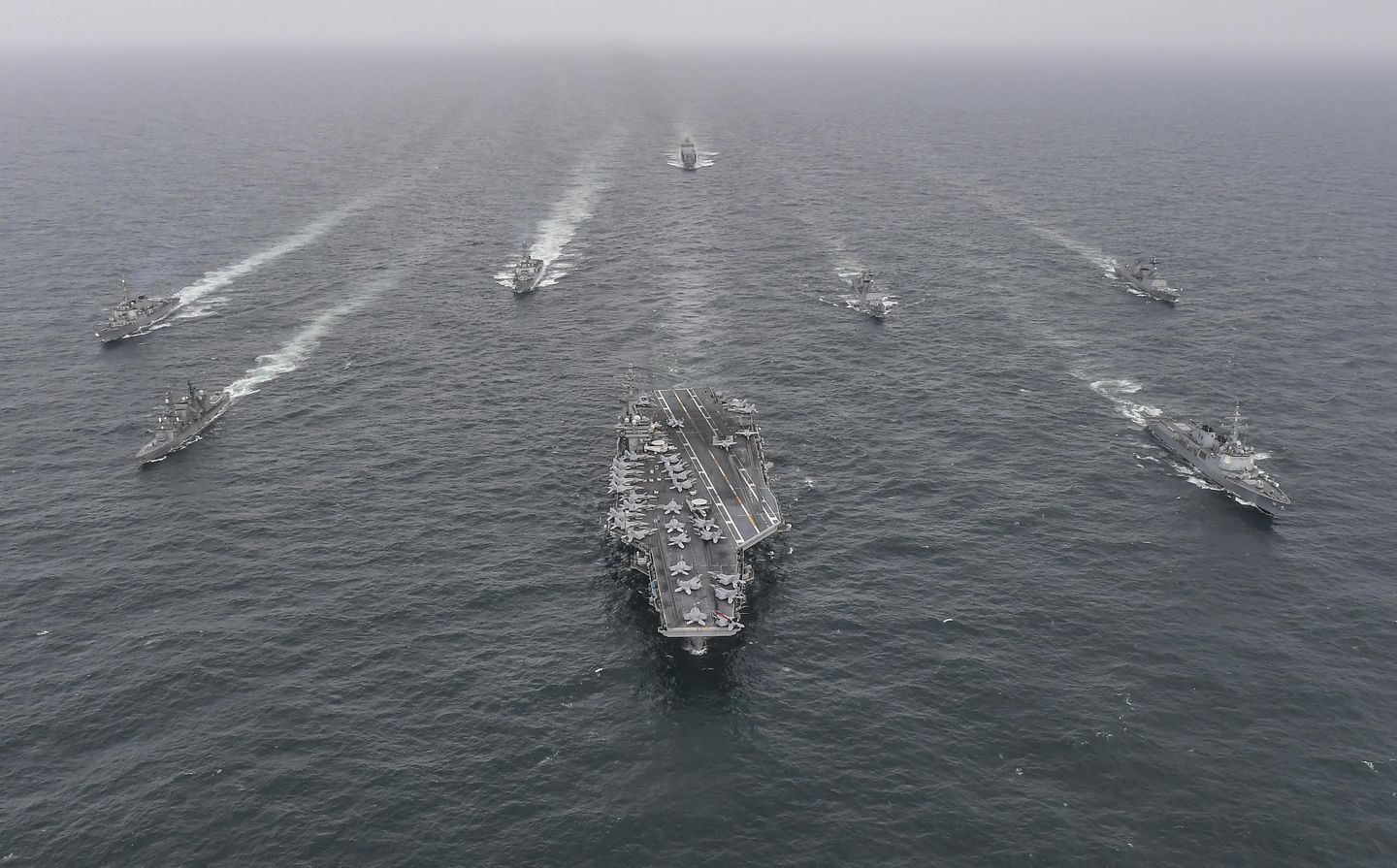
SEOUL, South Korea — U.S. Navy Secretary John Phelan met acting South Korean President Han Duck-soo on Wednesday to discuss shipbuilding cooperation and visited two major shipyards on the second leg of his Asia trip after Japan.
President Trump has made clear his determination to rebuild American shipbuilding capacity and has noted that it may need to be done with allies. U.S. allies South Korea and Japan are the world’s second and third largest shipbuilders by volume, respectively, after China.
Mr. Phelan’s visit comes as the U.S. is beefing up air power in Northeast Asia.
Mr. Han on Wednesday called Korea “the optimal partner” for a revitalization of U.S. shipbuilding, citing “trust accumulated through our companies’ successful maintenance, repair and overhaul of U.S. naval vessels,” local media reported.
Mr. Phelan expressed “deep agreement” on the need to further upgrade shipbuilding cooperation.
Outside Seoul, his destinations were HD Hyundai Heavy Industries Co., the country’s largest shipbuilder, and Hanwha Ocean Co., part of Hanwha Group of companies that include Korea’s major arms exporter. Hanwha last year acquired Philly Shipyard in Pennsylvania.
The Navy secretary visited Hyundai Heavy’s HQ and a shipyard where Aegis destroyers are being built.
Mr. Phelan, a former businessman tapped by Mr. Trump, previously visited Japanese shipyards with Japanese Defense Secretary Gen Nakatani.
In Japan, Mr. Phelan said he was exploring the potential of “dual use” shipping — commercial vessels that can be converted for military use.
South Korean and Japanese shipyards since early 2024 have signed cooperation agreements with U.S. counterparts to maintain and repair American vessels in the IndoPacific region, easing backlog at over-stretched U.S. facilities. Mr. Phelan also has called for the two allies to invest in the U.S.
America’s eroded shipbuilding capacity is in focus at the highest level.
On April 9, the White House published an executive order, “Restoring America’s Maritime Dominance,” bemoaning the state of U.S. commercial shipbuilding and demanding a range of measures to redress the situation. The U.S. accounts for less than 1% of global volume in shipbuilding.
Mr. Trump has suggested turning to partners with expertise in the sector to shore up gaps. “Maybe, we’ll use allies also in terms of building ships,” he said in a Jan. 7 interview. “We might have to.”
Japan and South Korea are well placed. They have the necessary industrial capacity and are seeking negotiating leverage in tariff talks with the U.S.
According to a Sept 2024 report by specialist media Virtue Maritime, the world’s three major shipbuilding nations were China (with a 51% global market share), South Korea (28%) and Japan (21%).
In the $236 billion sector, China has the largest overall volume, but South Korea has more advanced facilities and Japan has core strengths in precision engineering, Virtue Maritime found.
Shipbuilding capacity is closely tied to naval power.
Last year, China’s People’s Liberation Army Navy, or PLAN, outnumbered the U.S. Navy in number of hulls — 234 to 219, the Center for Strategic and International Studies found.
“If China continues to expand its fleet at the current pace and the United States does not revitalize its shipbuilding industry, China will grow increasingly likely to emerge victorious from interstate war … will grow more confident projecting power … and [will disregard] U.S. efforts to deter such behavior,” the CSIS wrote.
Making matters worse for the U.S. Navy, experts warn that it needs to maintain global presence, while the PLAN can concentrate in the Indo-Pacific.
Separately, the U.S. is adding airframes to its regional force.
An undisclosed number of B-1B Lancer aircraft, personnel and equipment from the U.S.-based 9th Expeditionary Bomb Squadron arrived at Japan’s Misawa Air Base on April 15, U.S. Forces media reported. The mission is the B-1B’s “first rotational deployment” to Japan, the media reported.
With Misawa lying in northeastern Japan, the deployment was promptly criticized by North Korea. State media dubbed the aircraft “Swans of Death” and called their presence “a long-term deployment of the U.S. strategic asset in the center of the Asia-Pacific area.”












